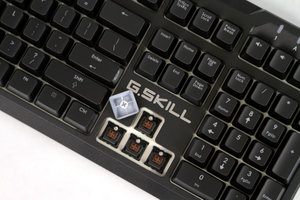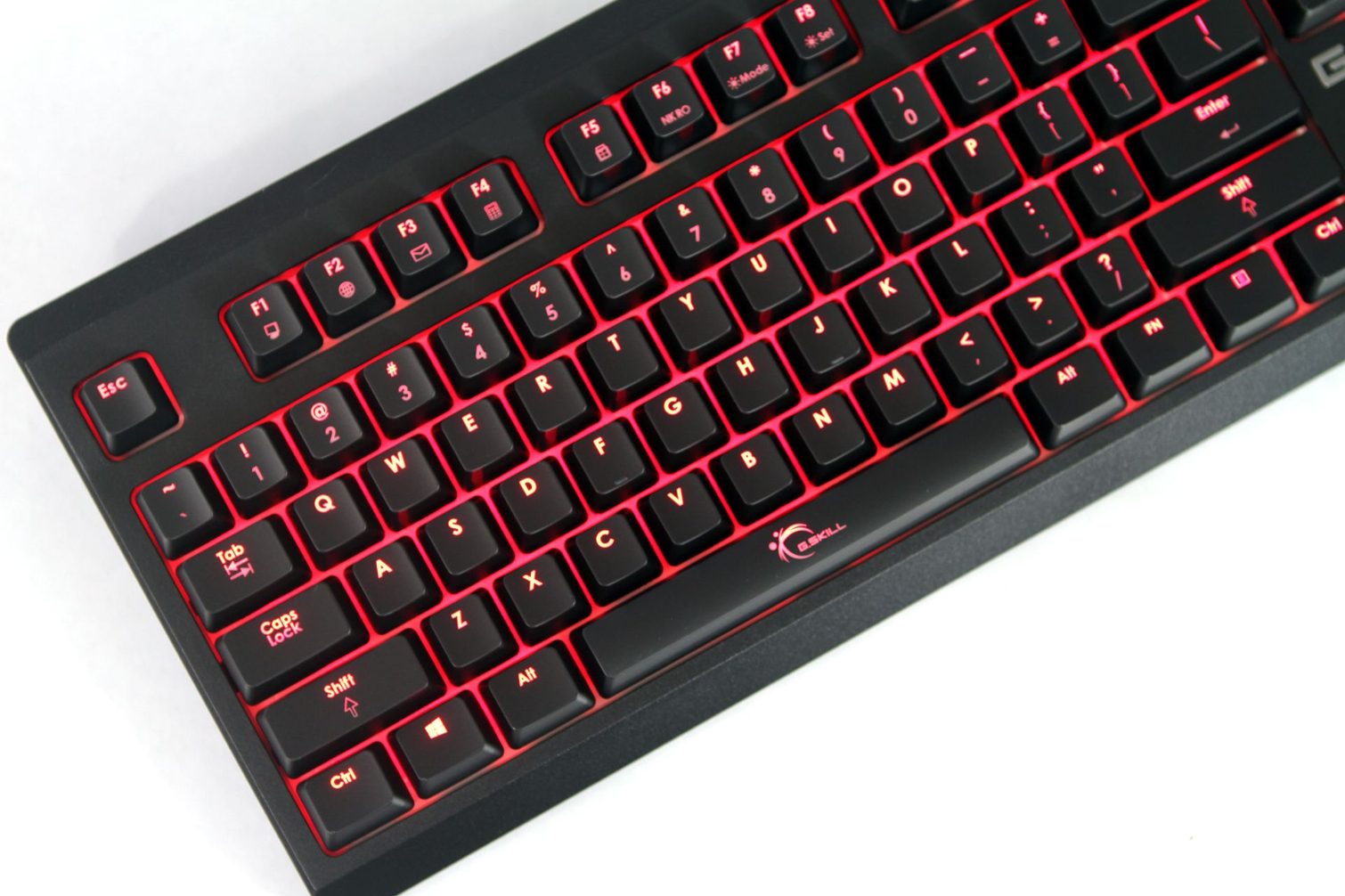Early Verdict
The G.Skill KM570 is a solid if uninspiring keyboard, with easy-to-use onboard macro and lighting effect controls.
Pros
- +
Easy onboard macro and lighting effect controls
- +
Build shows attention to detail
- +
Pleasing light diffusion
Cons
- -
Uninspired design
- -
Lacks software support
Why you can trust Tom's Hardware
Features & Specifications
Whereas G.Skill went all out on the bells and whistles for its Ripjaws KM780 keyboards, the Ripjaws KM570, by contrast, offers a more staid look and reduced feature set (and lower price). It serves to give those with smaller budgets (and simpler tastes) a G.Skill-branded option, which is a great deal--unless the quality of the KM570 can't match that of the KM780.
Let's dive in and find out.
Specifications
The KM570 comes in multiple flavors; there are three RGB units (with Cherry RGB switches) and four red LED-only options (with your choice of Cherry MX Red, Brown, Blue, or Speed Silver switches.) The RGB versions cost $120, the standard Red/Brown/Blue ones are $100, and the Speed Silver model is $110.
The version we have on hand with Cherry MX Brown switches and red LEDs is $100.


To be clear, the KM570 is not just a less-featured iteration on the KM780; it is a fundamentally different board. Instead of the black metal top plate the KM780 enjoys, the KM570 has a more traditional “bowl” design, with the switches mounted to backplate that’s covered by a top panel. The top panel and chassis are plastic, but the backplate is SPCC steel.


The white backplate and bowl design does make for attractive lighting. However, at the edges of the key area, and along the F row, you can see where the color falls off a bit.
The KM570 lacks passthrough ports and software, but it does have an MR key (for programming on-the-fly macros) and dedicated volume up/down/mute keys; all of these are located on the upper right corner of the keyboard, above the numpad.
Get Tom's Hardware's best news and in-depth reviews, straight to your inbox.
Unlike it's larger cousin, the KM780, the KM570 has a standard-sized bottom row of keys. These are, left to right: Ctrl, Windows, Alt, spacebar, Alt, Fn, menu, and Ctrl.
Underneath the keyboard, there is no extra cable routing trough. There are the standard flip-up feet that let you change your typing angle, but these are quite small and offer minimal height difference. They are also just hard plastic, with no rubber on the feet to prevent skid. In fact, we found that the KM570 slid around our desk a little more than we’d like.
Tthe KM570's switches are injection-molded ABS plastic.
You may be gathering this, but the KM570 is a simple, standard keyboard with few extras. Which is not necessarily a bad thing.
MORE: Best Deals
MORE: How We Test Mechanical Keyboards
MORE: Mechanical Keyboard Switch Testing Explained
MORE: All Keyboard Content
Seth Colaner previously served as News Director at Tom's Hardware. He covered technology news, focusing on keyboards, virtual reality, and wearables.
-
somidiot This could be perfect for work. :-) Don't care about plane jane, if it's solidly built (or made with quality) I'm cool with that, especially since the price isn't stratospheric.Reply





